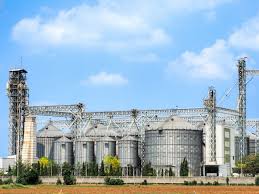🔍Smart Aeration Practices: A Cautionary Note for Silo Grain Storage
This week, I’d like to take a moment to remind the grain storage fraternity about the critical importance of a cautious and data-driven approach to aeration when managing food grains stored in bulk in silos.
⚠️ Why Aeration Demands Caution
While aeration is often considered a routine step in grain management, it should never be treated casually. Our internal analysis, backed by key datasets, highlights why aeration must be applied with precision—or not at all. The three key factors that guide our aeration strategy are:
-
Equilibrium Moisture Content (EMC)
-
Warehousing Shelf Life Duration (based on moisture content)
-
Weight Loss During Drying
These parameters consistently discourage casual or partial aeration—regardless of external temperatures.
🌫 The Danger of Incomplete Aeration Cycles
When ambient temperature falls below 15°C, many look to atmospheric humidity as a trigger for aeration. However, humidity levels fluctuate significantly between day and night, often causing unintentional pauses in aeration for hours—or even days.
These pauses can be extremely harmful.
During such interruptions, a “moisture zone” forms within the silo, ranging from 1 to 12 inches thick and containing moisture levels between 16% and 20%. This pocket of high moisture causes more harm to the grain than any intended benefit from aeration.
✅ Key Aeration Checklist Before You Begin
-
Ensure the aeration cycle can be completed in one go—no pauses or breaks.
-
Calculate the full cycle duration based on silo volume and aeration fan CFM.
-
Factor in energy consumption—aeration isn’t free and can be costly over time.
❄️ Consider a Smarter Alternative: Grain Chillers
In winter, switching to grain chillers can be a more energy-efficient and safer method. With ambient temperatures already lower, chillers can:
-
Reduce operational cost by at least one-third
-
Maintain consistent grain temperature
-
Avoid the formation of moisture zones altogether
Final Thoughts:
Aeration is not just about switching on the fan when it feels cold outside. It’s a calculated decision, guided by moisture content, airflow capacity, and uninterrupted execution. A pause in aeration is more than a technical glitch—it’s a biological risk. Let’s be mindful, analytical, and efficient in how we manage the grains that feed millions.

